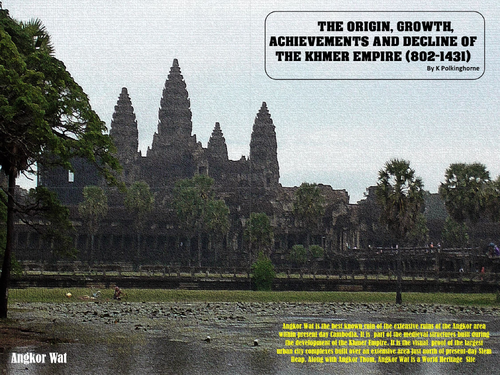



Here is a resource with potentially a whole range of uses. It can stand alone as an investigation into "lost cities in the forest". It fits into medieval history and histories of Empires. It fits in with significant urban developments of the Middle Ages. It can be used in studies of World Heritage Sites - Angkor Wat and Angkor Thom (Bayon Temple). It touches themes of Hindu and Buddhist religions. In the investigation phase of the Angkor region it indicates the role of satellite imagery, scientific investigations of dendrochronology to link with climate change.
Take your students into the forests north of Siem Reap Cambodia and they can be like the first foreign missionaries who ventured in an area on the strength of local stories of a lost civilisation. Discover the ruined temple of Ta Prohm (see the picture) and then follow the discoveries of the large urban complexes of Angkor Wat and Angkor Thom. Carefully selected photographs and maps will allow your students to see the scope and skill of the builders of the temples, canals, moats and bridges of the Angkor area. Enter Angkor Thom across the causeway and through the South Gate as the Chinese Zhou Daguan did centuries ago. Who was Zhou Daguan? Well he is part of the discovery. His worksheet and the question sheet are provided as attachments. This unit will enhance studies of Asian environment, history and culture.
Take your students into the forests north of Siem Reap Cambodia and they can be like the first foreign missionaries who ventured in an area on the strength of local stories of a lost civilisation. Discover the ruined temple of Ta Prohm (see the picture) and then follow the discoveries of the large urban complexes of Angkor Wat and Angkor Thom. Carefully selected photographs and maps will allow your students to see the scope and skill of the builders of the temples, canals, moats and bridges of the Angkor area. Enter Angkor Thom across the causeway and through the South Gate as the Chinese Zhou Daguan did centuries ago. Who was Zhou Daguan? Well he is part of the discovery. His worksheet and the question sheet are provided as attachments. This unit will enhance studies of Asian environment, history and culture.
Something went wrong, please try again later.
This resource hasn't been reviewed yet
To ensure quality for our reviews, only customers who have downloaded this resource can review it
Report this resourceto let us know if it violates our terms and conditions.
Our customer service team will review your report and will be in touch.
£0.00